Iron is a mineral that is vital for many bodily functions. Supports the transport of oxygen in the blood. Therefore, it is important for the proper development and functioning of cells, as well as for the production of certain hormones and tissues. Iron deficiency can lead to symptoms such as fatigue and dizziness, paleness, bleeding, dry skin, taste disturbance (desire to eat toothpaste). but also to iron deficiency anemia. In most cases, this condition is easily treatable.
The editors of estet-portal.com in this article will talk about what threatens iron deficiency and how to make up for the lack of iron in the body.
- Causes of iron deficiency and ways to make up for it
- Iron deficiency: diagnosis of the disease and
- precautionary measures Symptoms: how to recognize iron deficiency in the body The symptoms of iron deficiency vary depending on the severity of the deficiency as well as the general health of the individual. With mild to moderate iron deficiency, a person may not experience any noticeable symptoms. Sometimes this can lead to iron deficiency anemia. This is when the body does not have enough red blood cells or hemoglobin in the blood.
• fatigue;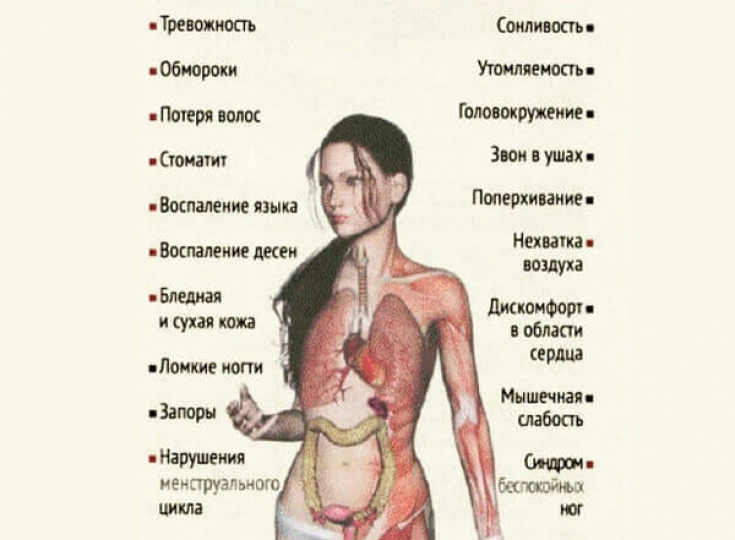
• weakness;
• dizziness;• headaches;
• temperature sensitivity;
• cold hands and feet;
• shortness of breath;
• chest pain;
• difficulty concentrating;
• palpitations;
• restless leg syndrome;
• cravings for non-food items
Orthorexia: 10 Signs You Need Help Now
• brittle nails;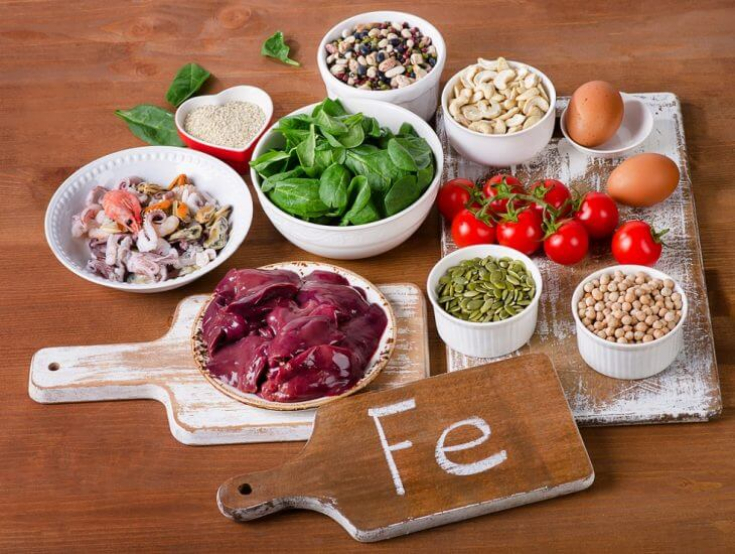 • cracks on the sides of the mouth;
• cracks on the sides of the mouth;
• inflammation of the tongue;
• abnormally pale or yellow skin;
• irregular heartbeat and
whether breathing.
Causes of iron deficiency and ways to fill it
There are several possible causes of iron deficiency, including:
1. DietIron is found in many types of food, including fish, fortified cereals, beans, meat, and green leafy vegetables. The National Institutes of Health recommends that you get 8 mg per day.
2. Iron Absorption
Some medical drugs or diseases can prevent the body from absorbing iron properly, even when a person eats a lot of iron-rich foods.
The role of minerals in human life processes ;
For example:
• intestinal and digestive diseases such as inflammatory bowel disease; • gastrointestinal surgery such as gastric bypass; • rare genetic mutations.
3. Blood Loss
Hemoglobin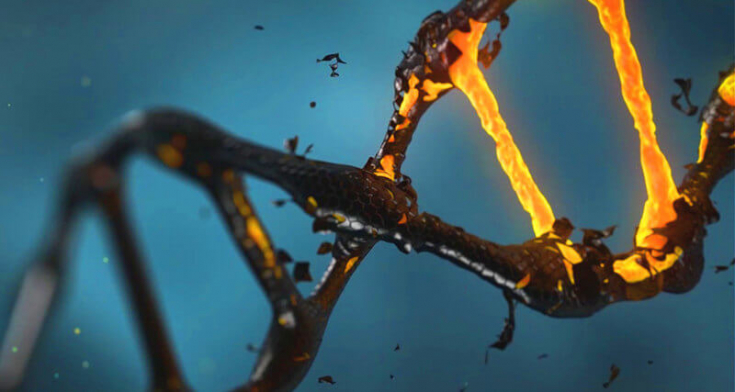 is a protein in red blood cells. It contains most of the iron in the body. For this reason, blood loss can lead to iron deficiency and anemia. Blood loss can be the result of trauma or too frequent blood tests or donations.
is a protein in red blood cells. It contains most of the iron in the body. For this reason, blood loss can lead to iron deficiency and anemia. Blood loss can be the result of trauma or too frequent blood tests or donations.
• internal bleeding from ulcers or colon cancer;
• regular use of aspirin or non-steroidal anti-inflammatory drugs (NSAIDs);
• heavy menstrual periods;• bleeding from the urinary tract;• rare genetic diseases;
• surgical interventions.
Other causes that can cause iron deficiency include:
• renal insufficiency;
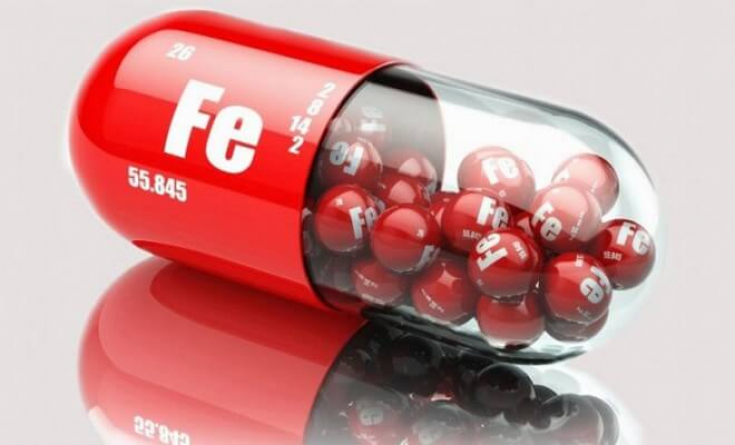 • obesity.
• obesity.
Iron is especially important during periods of growth. For this reason, children and pregnant women have a higher risk of developing iron deficiency and anemia than others.Including more iron in the diet can help a person recover from an iron deficiency.
Meat and fish products containing iron:
• by-products – liver, kidneys;
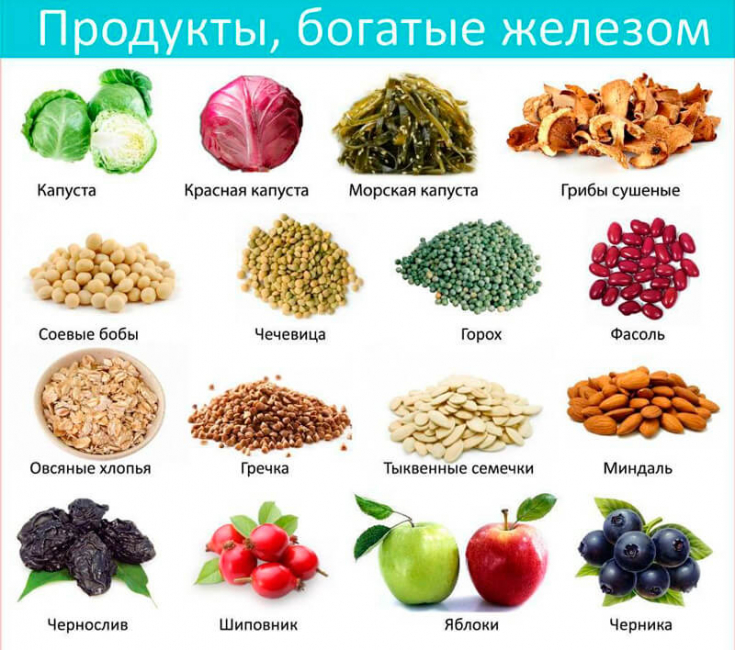 • shellfish.
• shellfish.
Plant foods containing iron: legumes – soybeans, lentils, peas, beans;
• cereals – buckwheat, oatmeal, barley;
• sea kale ;
• sesame, pumpkin and sunflower seeds;
• nuts – hazelnuts, almonds, peanuts;
• dried fruits – dried wild rose, dried apples, dried apricots, raisins, prunes, dates;
•
fruit
– fresh rose hips, apples, dogwood, persimmon, blackcurrant;
•
vegetables
– beets, brussels and cauliflower, celery, dill, parsley,
garlic, nettle.
Iron deficiency: diagnosis of the disease and precautionary measures
A doctor may initially perform a physical examination when diagnosing iron deficiency. If a doctor suspects an iron deficiency, they usually need a blood test.
If a doctor suspects internal bleeding, additional tests may be needed: blood test;
• endoscopy;• colonoscopy.
Anyone with an iron deficiency should talk to a doctor. A doctor can provide a simple blood test to get answers. If a person's iron levels are normal, there may be another problem causing their symptoms. It is best to work with a doctor to get an accurate diagnosis.
Recovery of iron levels to normal levels can occur within 1 or 2 months.
Watch us on YouTube:
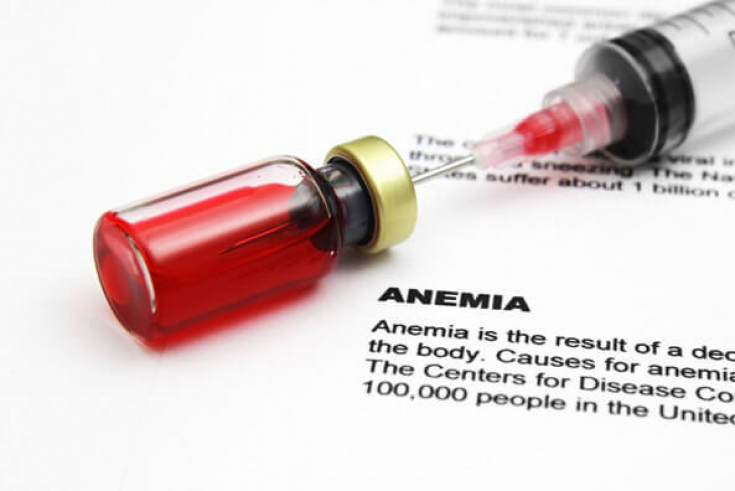






Add a comment